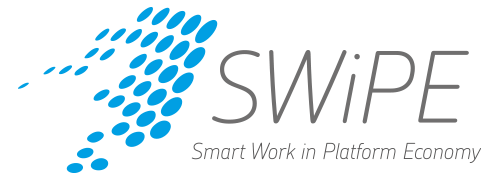
From time of Schumpeter, continuing innovation activity has been accepted as one of the foundation stones of economic growth and societal wellbeing. Technological development streamlines our practices and creates new products, services and experiences that improve our quality of life. According to Matti Pohjola, progress in information and communications technology in the 2000’s alone accounts for half of productivity gains in work and 40% of output growth.
The role of higher education institutions as engines of continuous renewal is considered to be central because radical innovations need the freedom and resources common to basic research efforts. University innovation processes and technology transfer between universities and companies have indeed both received a great deal of attention. In 2007 changed to the higher education innovation act were inspired by examples from abroad, while in 2009 the universities act was amended to include another mandate – the so called third mission – to encourage societal impact by higher education institutions.
The purpose of these changes was to improve frameworks governing research and to promote the industrial and societal use of technologies that arise from research. A significant part of conversation on the topic was conducted on an institutional level; there were discussions touching on the academic ivory tower, the role of higher education and the effects of anti-commercial research culture and so on. One central, perhaps crucial, agent was missing in those conversations however: the researcher – the person that invents and creates new knowledge.
In the beginning of the decade ETLA began to investigate the views of the ignored agent on the use of research results outside the ivory tower. In 11 Finnish research universities, almost 3000 researchers from various fields answered a survey on related themes ranging from cooperation with companies and knowledge of intellectual property rights to the role of support services by universities. The core theme of the survey were the personal motives of researchers to take part in the commercial or societal application of their research results: Why do researchers cooperate with companies, and what do they gain from the cooperation? Why do some researchers want to commercialise their findings and others do not? Do university research and innovation services provide enough support for researchers’ commercialisation efforts or do they hinder them?
The studies indicated that commercialisation of research and economic motives were not, as it turns out, important drivers in research work. About 40% of researchers reported inventing something that has commercial potential. Of these a little over a third held rights to the invention that would allow them or their research group to decide on a path forward. Of this third however, only half were interested in taking the matter any further. This group was rather small.
In addition, direct cooperation with companies was rarer than expected. Even those researchers that had experience working with companies did so primarily from research motives: to fund research or to identify new topics to pursue. Only 10 % of responding researchers had received any supplementary commercial training. The small role of commercial perspectives in research is exemplified by the startlingly weak understanding of immaterial property rights among researchers.
The three most important factors affecting the decision to commercialise were (i) the potential of inventions to benefit society, (ii) researchers personal ambition and drive to achieve, and (iii) securing research funding. Commercialisation and other economic motivations did not have a significant impact. On the contrary, altruistic, socio-cultural and personal motivations had a more profound impact. In this Finnish research culture diverges from, for example, the American. ETLAs follow-up research confirmed the supposition that across the pond economic motives and incentives drive the commercialisation of research results to a far greater degree. It is clear that there are significant identity and cultural differences at play here.
And yet, nearly a decade later there’s something afoot near our universities. Even those that follow the topic only in passing cannot have failed to notice the different kinds of accelerators, growth programmes and start-up events. We have Slush, Design Factory, Cleantech Venture Day, Startup Sauna, Vertical Accelerator and various flavours of hackathon. The success of Finnish Digital Workshops abroad has boosted interest in doing and has brought entrepreneurship back into the fold of “sexy” topics for the media: in Finland, we also “know how to dream big”! It is interesting that the liveliest startup-communities have formed in proximity to universities. Even many natives of Sillicon Valley have, on getting to know Finnish start-up culture, noted that Finnish communities have nothing to be ashamed of in terms of energy or resources in comparison to the Californian wonderland.
What on earth happened? Where did this shift come from? Did the decline of Nokia give Finnish entrepreneurship a boost by freeing vast amounts of talent to the open market? Has global convergence and cross-cultural pollination, both empowered by digitalisation, allowed seeds of growth entrepreneurship to take root in Finnish ground. Or could it be that changes made a decade ago in the higher education system have at last begun to bear fruit and support the growth of this phenomenon? It is high time to find out. In the SWiPE project we are prepared to break out the heavy equipment!
The author, Antti-Jussi Tahvanainen is a research director at ETLA – the Research Institute of the Finnish Economy. You can read more about Antti’s work here.
